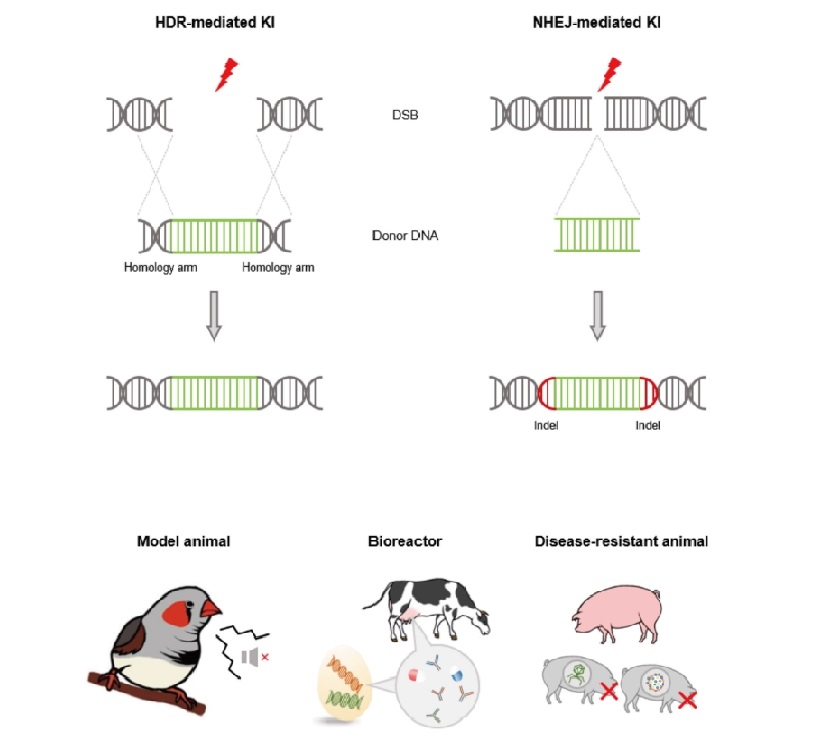Abstract
Homology directed repair (HDR) and non-homologous end joining (NHEJ) are major DNA repair pathways of eukaryotes, and these DNA repair pathways have been applied to genome modification. Moreover, programmable genome editing technologies such as zinc finger nucleases (ZFN), transcription activator-like endonucleases (TALENs) and clustered regularly interspaced short palindromic repeat (CRISPR) and CRISPR-associated protein 9 (Cas9) system which could efficiently induce DNA double strand breaks (DSBs) at targeted locus, have improved the efficiency of the genome modification. Based on the genome modification technologies, several genome-modified animals for diverse purposes including model animal for identifying specific gene function have been developed, and the genome modification technologies have been expected to apply for practical uses such as disease control and animal bioreactor development. In these regards, we describe genome modification technology mediated by the two major DNA repair pathway, HDR and NHEJ, as well as the machinery itself, and further discuss about applications of the genome modification technology.
Figures & Tables

Figure 1. Targeted genome modification mediated by DNA repair pathways and its application. The two major DNA repair pathways (HDR and NHEJ) are initiated when DSBs occurs by programmable genome editing tools such as CRISPR/Cas9. When donor plasmid exists, DNA repair pathways mediate targeted genome modification. Based on the genome modification technology, various organism can be generated such as model animal, animal bioreactor, disease resistant livestock and other novel organisms which have valuable traits.


